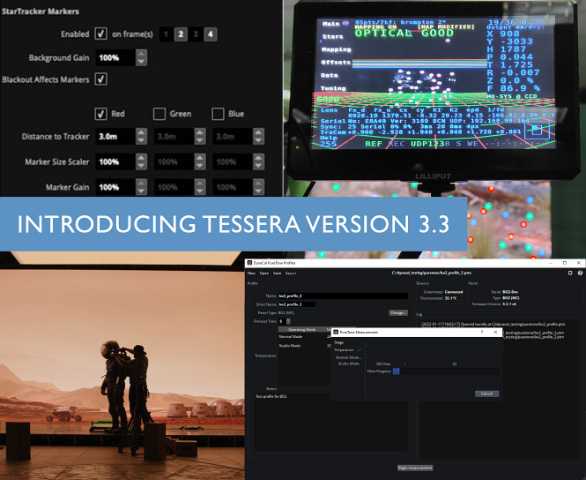Brompton unveils Tessera v3.3
- Details

New features include Operating Modes, and Per-Batch PureTone. Additionally, the Tessera SX40 and S8 now have a preset to support the ACES AP1 colour space, as used by ACEScg. Finally, in collaboration with Mo-Sys, Brompton has added support for the company’s StarTracker camera tracking system when using panels fitted with the Tessera R2 or Brompton’s new Tessera R2+ and an SX40 or S8 processor with Frame Remapping.
The new Tessera R2+ receiver card has the same SO-DIMM form-factor as the R2, which has set the standard for receiver cards for many years. R2+ is backwards-compatible with all existing R2-based panel designs, but brings additional data pins and capability to support new LED drivers, ensuring continued support for more panel types and keeping Brompton Technology at the cutting edge for new panel designs.
Normally, when FAEs work with panel manufacturers to create a panel configuration, certain trade-offs must be made between different aspects of visual performance. Pushing for faster refresh rates may mean reducing PWM bit depth, whilst increasing maximum brightness may compromise low brightness performance. Even though panel manufacturers are seeking to find a good balance, there is currently only a ‘one-size-fits-all’ configuration that is applied for the life of the panel.
“This presents a real challenge if you need to use LED panels across various scenarios that all require prioritising different aspects of visual performance, such as if you require maximum brightness for an outdoor live event and highest effective refresh rate to optimise performance with certain camera types in a studio,” says Brompton CTO, Chris Deighton. “With the Operating Modes feature available in Tessera version 3.3 onwards, both scenarios can benefit from the best possible panel performance.”
Operating Modes enables a single panel type to have multiple Operating Modes, each with a slightly different configuration for the panel. Different Operating Modes can therefore prioritise different aspects of visual performance, such as maximum frame rate, low brightness performance, bit depth or effective refresh rate, among others.
In the new Tessera v3.3 software PureTone has been extended to allow each individual batch of panels to be measured separately to generate a PureTone profile specific to that batch. To create a profile, a PureTone profiling kit is required, which incorporates a sensitive colorimeter. A single LED panel is measured within a dark room to generate the profile, which can then be used with all the panels in that particular batch.
“With the new PureTone feature, our customers and panel manufacturers can correct the non-linearity for each batch of panels, ensuring neutral greyscales and accurate luminance performance in all Operating Modes,” explains Deighton. “With PureTone, matching different batches of LEDs becomes much easier. PureTone is also really useful in film and broadcast work, where screens are often run at much lower brightness to match camera exposures but still need to maintain neutral grayscales and accurate colour reproduction.”
A beta version of the v3.3 software is now available for download from the Brompton website.
















